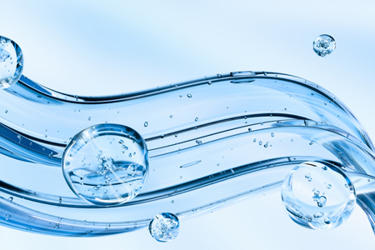When Chemistry Meets Water Innovation

By Kevin Westerling,
@KevinOnWater

Nobel-winning molecular materials are poised to reinvent purification, desalination, and reuse.
Every so often, science gifts our industry a development so profound that it reshapes how we think about water itself. The 2025 Nobel Prize in Chemistry, awarded to Omar M. Yaghi (University of California, Berkeley), Susumu Kitagawa (Kyoto University), and Richard Robson (Melbourne University) for their pioneering work in developing metal–organic frameworks (MOFs), represents one such moment.
These crystalline, sponge-like structures have the potential to revolutionize how we purify, harvest, and reuse water. Imagine materials engineered not just to trap contaminants, but to regenerate themselves; or solar-powered boxes that pull pure water straight from desert air; or filtration systems that recover valuable nutrients instead of wasting them.
Those aren’t futuristic fantasies — they’re emerging water applications born directly from the Nobel-winning breakthrough.
From Breakthrough To Bench Scale
When Yaghi and his peers first assembled MOFs in the 1990s, they were searching for better ways to store gases like hydrogen and carbon dioxide. But over time, the same molecular porosity that made MOFs excellent for energy storage revealed an even more urgent purpose: clean water. With internal surface areas roughly the size of a football field per gram, MOFs can be fine-tuned to capture specific contaminants, from lead and arsenic to PFAS and pharmaceuticals.
MOF frameworks can also be regenerated, with low-energy input, to extend filter lifespans and cut operational costs. MOF coatings can be applied to reverse osmosis membranes to boost flux rates and resist fouling, thereby reducing the energy demand of desalination — historically one of the water sector’s biggest sustainability hurdles.
Drawing Water From Thin Air
Another significant application, seemingly right out of the movie Dune, is harvesting water from the atmosphere. MOFs can absorb vapor at just 10% humidity — conditions drier than the Mojave Desert — to produce drinkable water powered only by the sun. Field trials have already proven that this isn’t science fiction; it’s a scalable water-scarcity solution that offers a glimpse into a decentralized, off-grid future.
A Blueprint For Circularity
MOFs also perfectly align with the water sector’s drive toward circularity and resilience. Their selective chemistry supports the recovery and reuse of nutrients and metals, while their regenerative nature reduces both waste and lifecycle costs. And because MOFs can be tuned to target almost any molecule, they open the door to customized treatment in response to regulatory and environmental needs.
In short, they embody the future we’ve been talking about for years: materials that help us do more with less, protecting both public health and the planet.
A Prize With Purpose
By awarding Yaghi, Kitagawa, and Robson the Nobel, the Royal Swedish Academy didn’t just honor brilliant chemists — they spotlighted the next wave of water innovation. What began as a curiosity in crystal design has become a global movement shaping how we’ll clean, conserve, and secure water for generations to come.
In the pages of Water Innovations, that’s what we celebrate: the convergence of discovery and necessity. MOFs remind us that chemistry doesn’t just explain the world — it can save it.
